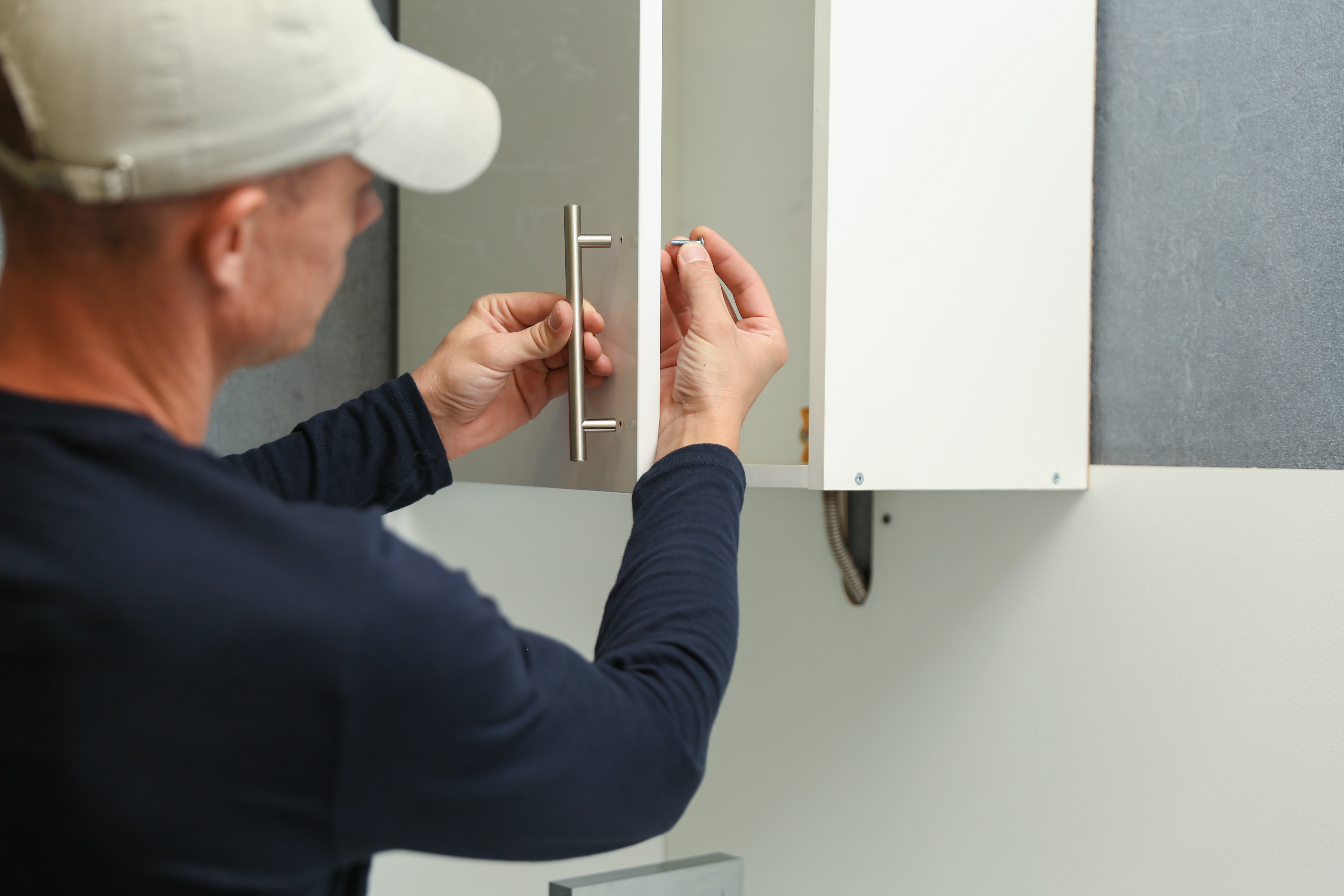How To Change Kitchen Cabinet Door Handles: A DIY Guide
Designing the perfect kitchen involves a lot of different elements, with each one contributing to the overall look and feel of your space. Everything from your unit choices to flooring preferences can make a difference in the result.
Amongst all the choices that need to be made, one that can make the biggest difference is your cabinet door handles. This is a simple but effective DIY project that can give your kitchen a fresh new look.
Want to know how it’s done? In this guide, we’ll delve into the world of kitchen cabinet handles and how you can DIY them with the help of our practical tips.
Tools and materials needed
Before you can make a start on your DIY project, you should gather all the necessary tools and materials. Some of the things you’ll need include:
- Screwdriver
- Ruler
- Pencil
- Drill
- Spirit Level
And of course, the other essential items you’ll need are your new handles. Kitchen handles can transform your space, but there are some things to consider when choosing the right style for your needs:
- Choose handles that either match or enhance your kitchen’s aesthetic.
- Consider how your handles will be used. The right handle can significantly enhance functionality in your kitchen.
- Think about the different features of your kitchen handles such as grip, comfort and ease of use, especially if your kitchen is a high-traffic area.
Removing old handles
Removing the old handles is the first step in transforming your kitchen cabinets. Use the following steps to help you remove your old handles safely and efficiently.
- Gather all the necessary tools.
- Assess each of the existing handles to check how they’re attached (screws, bolts, etc.)
- Loosen any screws or fasteners. You may need some pliers for additional grip for stubborn, tight or painted-over screws. Be careful not to damage the cabinets during this step.
- Remove the old handles carefully. Once the screws are out, this should be as simple as pulling the handles away from the cabinet.
- Inspect for any additional fasteners. There may be further components that need removing, such as clips and brackets.
- Tackle painted-over screws using a utility knife or paint scraper to carefully expose screw heads.
Preparing for new handle installation
Once the old handles are off, you can start preparing to install the new handles. You should ensure you’re starting with a clean smooth surface to help get the best results.
- Clean the cabinet surfaces to help get rid of any dust and debris. Leave the surfaces to dry before proceeding.
- Inspect the cabinet doors for damage and repair any issues as necessary.
- Fill old screw holes (if necessary). If the new handles don’t align with the existing holes, use a filler to fill them and allow them to dry completely. You will need to sand down the holes to create a smooth surface.
- Give the cabinets another wipe-down to ensure they’re clean and ready to go.
Measuring and marking for new handles
This is an important step for ensuring your new handles are installed correctly. There is a lot of room for error here, so if necessary, enlist someone to help you double-check any measurements and to help ensure you’re on the right track.
- Check the alignment for the new handles. You can do this by placing the new handles against the cabinet door and positioning them as necessary.
- Measure and mark for your new handles. You can do this with a pencil and ruler and may need a spirit level to help ensure your holes are connected by a straight and even line. This will help you avoid common measuring mistakes.
- Double-check your measurements. Place the handles against your markings to confirm they’re aligned correctly. Make any adjustments as needed.

Installing the new handles
Now it’s time to install the new handles. If you need to create new holes, you’ll be using power tools for this step, it’s important to ensure your environment is safe and that any safety features are activated when the drill isn’t in use.
- Prepare your drill and workspace. Ensure you have the correct bit for your new handles. Your workspace should be clear of any debris, and you may need to place a protective surface if needed.
- Check the placement one last time. Make any adjustments as necessary to ensure your handle placement is accurate.
- Drill pilot holes (if needed) for accuracy. This should be done using a slightly smaller screw head to avoid splitting the wood.
- Install the new handles. Align the holes with the handles on the cabinet doors and secure them in place with screws and a screwdriver.
- Tighten screws firmly. Ensure the screws are tightened securely but do not overtighten, as this could damage the cabinet or handles.
- Check for misalignments. If you notice something isn’t right, make adjustments as necessary. You may need to fill existing holes create new ones, and sand them down to ensure the surface is smooth once again.
- Repeat as necessary for each handle, taking your time to maintain consistency.
- Test your handles to make sure they are securely fastened. Ensure any loose handles are tightened as needed.
Finishing touches and aftercare
Now that you have installed your handles, it’s important to maintain them to help ensure longevity. Some great tips for cabinet handle aftercare include:
- Keep the surface clean using a cloth and appropriate cleaning materials. You should inspect your new handles regularly for finger marks. Avoid any harsh chemicals that may damage the finish.
- Address any damage or scratches promptly to maintain your handles’ aesthetic appeal.
- Repurpose your old handles by using them for DIY projects or repurposing them as decorative hooks.
- Recycle any unwanted cabinets as necessary. You should check with your local recycling centre for information, or you can list your handles on a re-use page for someone else to use.
- Tighten your handles as needed to stop them from becoming loose over time.
- Keep your cabinets clean to help prevent damage and maintain their appearance
Changing your kitchen cabinet handles is a simple and affordable way to transform your kitchen. It’s a DIY project you can complete yourself, using minimal tools, but the results will make a huge difference. Completing a DIY project like this can be incredibly rewarding, and could even spur you on to tackle further projects yourself.
Why not take on another project to help enhance your living space and continue your kitchen renovation?
At Frelan Hardware, you’ll find a fantastic selection of kitchen cabinet door handles to choose from. Explore our products to pick your perfect cabinet handles and follow the steps above to install your new handles and give your kitchen a fresh new look!
